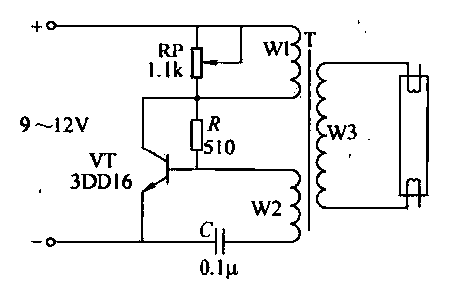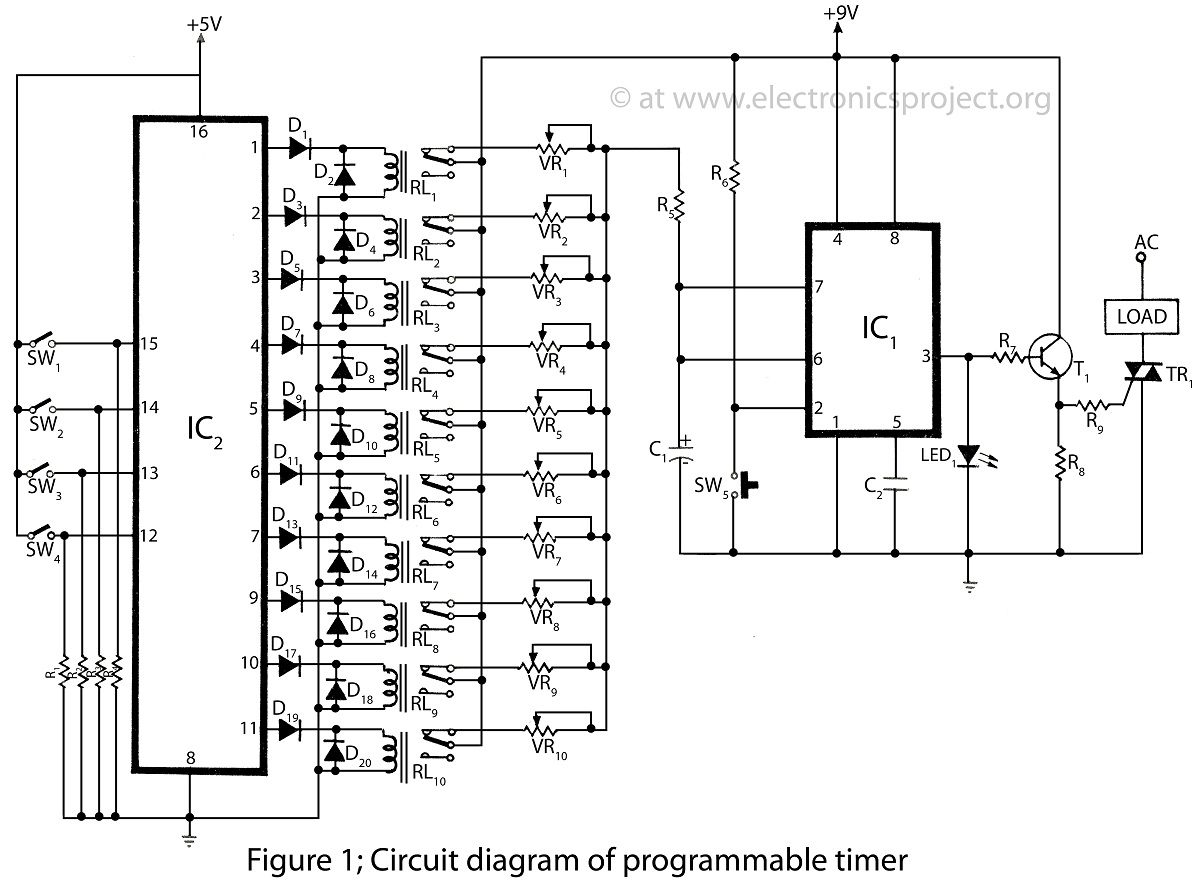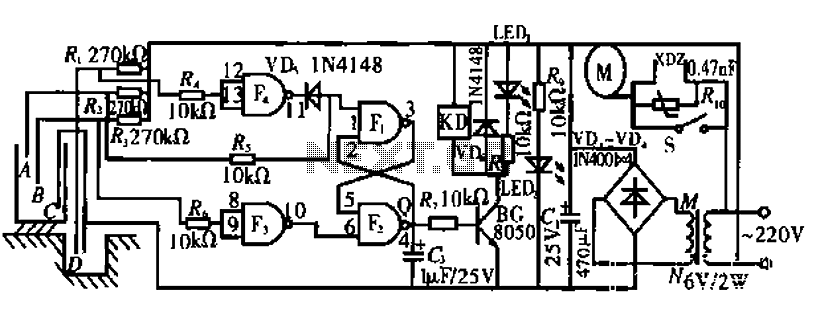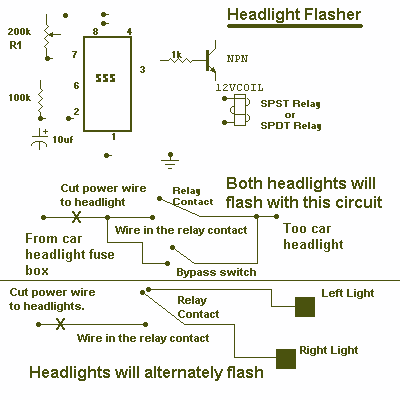
DC fluorescent light circuit

This circuit is designed for the ignition of a direct current (DC) fluorescent lamp rated between 6 to 8 watts. It utilizes a common pole-blocking oscillator that consists of a transistor (VT) and is induced by the secondary side of a transformer, enabling intermittent oscillation to ignite the fluorescent light. In practical applications, when the power supply voltage is set to 12V DC, the lamp ignites after a continuous voltage of 5V. If the supply voltage is adjusted to 6V DC, the secondary winding of the transformer, designated as W3, should be increased from 1600 turns to 450 turns. The circuit incorporates resistors rated at either 0.25W or 0.125W and capacitors with values ranging from 1 to 1 microfarad (μF). The choice of capacitance affects the frequency of the intermittent oscillator, and selecting the appropriate capacitance value optimizes circuit efficiency. It is recommended to use an E-type ferrite transformer with winding specifications: W1-W2 having 40 turns with a diameter of 0.35 mm, and W3 having 450 turns with a diameter of 0.121 mm.
The circuit operates by utilizing the principles of oscillation to deliver the necessary voltage and current to ignite the fluorescent lamp. The oscillator, formed by the transistor VT, generates a square wave signal that drives the transformer. The transformer steps up the voltage, allowing for the initial ignition of the fluorescent lamp. The configuration of the windings is critical; the primary winding (W1-W2) with 40 turns is designed to create a magnetic field that induces a higher voltage in the secondary winding (W3).
The selection of the capacitor (C) is crucial as it determines the oscillation frequency. An increase in capacitance results in a lower frequency, while a decrease raises the frequency. This frequency modulation is vital for achieving the desired performance of the ignition circuit. The resistors in the circuit provide necessary current limiting and stabilization for the transistor, ensuring reliable operation within specified limits.
For optimal performance, the use of ferrite core materials in the transformer is recommended. Ferrite cores exhibit high magnetic permeability, which enhances the efficiency of the transformer and minimizes energy losses. The winding specifications, including the wire diameter, are chosen to balance current carrying capacity and inductance, further contributing to the circuit's overall efficiency.
In summary, this ignition circuit for a DC fluorescent lamp is a carefully designed oscillator circuit that leverages transformer action and component selection to achieve reliable lamp ignition and operation. Proper implementation of the winding turns, capacitance, and resistance values is essential to ensure maximum efficiency and performance.For the use of direct current 6 ~ 8W fluorescent lamp ignition circuit ring. It is a common emitted by a pole blocking oscillator consisting of VT, induced by the secondary side of the transformer in an intermittent oscillation crossing, fluorescent light. The actual application of the test, when the power supply voltage is DC 12V, the lamp ignited after continuous voltage 5zv.
If the supply voltage switch to 6V DC, the transformer secondary winding turns W3 of 1600 should be increased to 450 turns turns. R Available 0.25W or 0,125W resistance, capacitance C from o. Choose between 1 ~ lFcF. C value change between intermittent oscillator frequency is also changed. Select the appropriate value of C, the circuit allows maximum efficiency. Preferably with an E type ferrite transformer. Wl-WZ - 40 turns, diameter of 0.35 mm; W3-450 turns, diameter of 0.121mm.
The circuit operates by utilizing the principles of oscillation to deliver the necessary voltage and current to ignite the fluorescent lamp. The oscillator, formed by the transistor VT, generates a square wave signal that drives the transformer. The transformer steps up the voltage, allowing for the initial ignition of the fluorescent lamp. The configuration of the windings is critical; the primary winding (W1-W2) with 40 turns is designed to create a magnetic field that induces a higher voltage in the secondary winding (W3).
The selection of the capacitor (C) is crucial as it determines the oscillation frequency. An increase in capacitance results in a lower frequency, while a decrease raises the frequency. This frequency modulation is vital for achieving the desired performance of the ignition circuit. The resistors in the circuit provide necessary current limiting and stabilization for the transistor, ensuring reliable operation within specified limits.
For optimal performance, the use of ferrite core materials in the transformer is recommended. Ferrite cores exhibit high magnetic permeability, which enhances the efficiency of the transformer and minimizes energy losses. The winding specifications, including the wire diameter, are chosen to balance current carrying capacity and inductance, further contributing to the circuit's overall efficiency.
In summary, this ignition circuit for a DC fluorescent lamp is a carefully designed oscillator circuit that leverages transformer action and component selection to achieve reliable lamp ignition and operation. Proper implementation of the winding turns, capacitance, and resistance values is essential to ensure maximum efficiency and performance.For the use of direct current 6 ~ 8W fluorescent lamp ignition circuit ring. It is a common emitted by a pole blocking oscillator consisting of VT, induced by the secondary side of the transformer in an intermittent oscillation crossing, fluorescent light. The actual application of the test, when the power supply voltage is DC 12V, the lamp ignited after continuous voltage 5zv.
If the supply voltage switch to 6V DC, the transformer secondary winding turns W3 of 1600 should be increased to 450 turns turns. R Available 0.25W or 0,125W resistance, capacitance C from o. Choose between 1 ~ lFcF. C value change between intermittent oscillator frequency is also changed. Select the appropriate value of C, the circuit allows maximum efficiency. Preferably with an E type ferrite transformer. Wl-WZ - 40 turns, diameter of 0.35 mm; W3-450 turns, diameter of 0.121mm.





